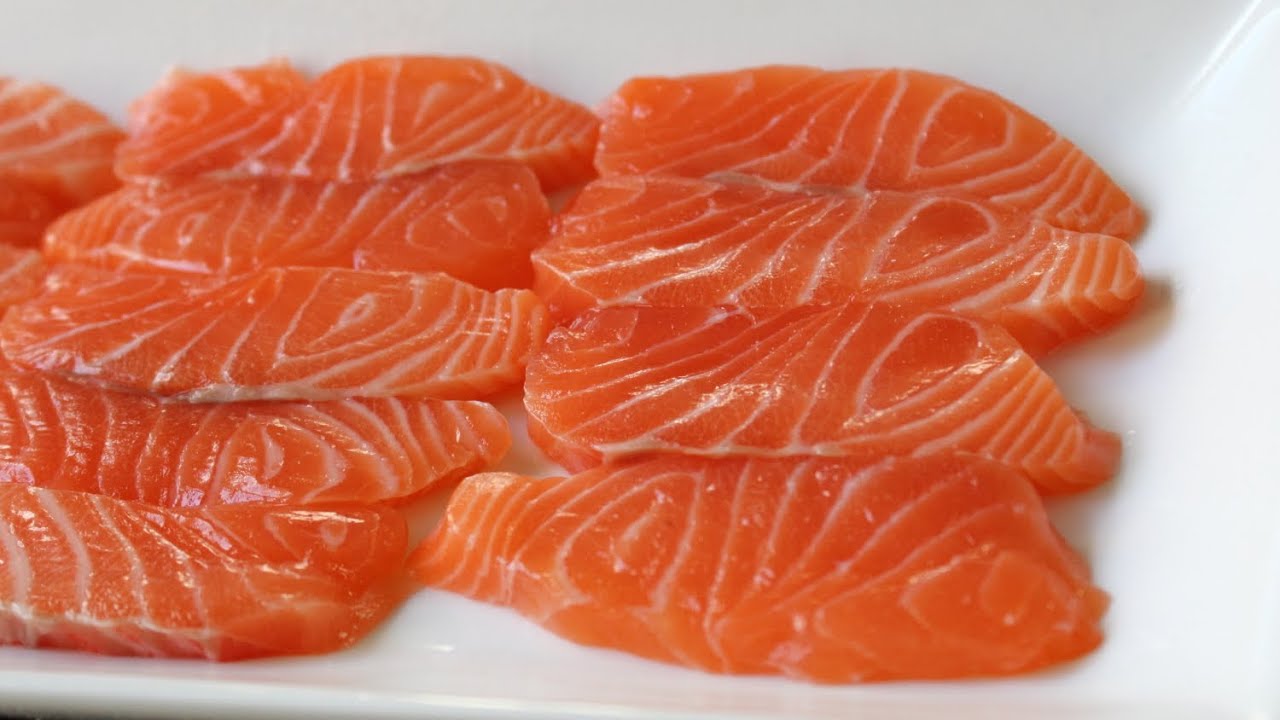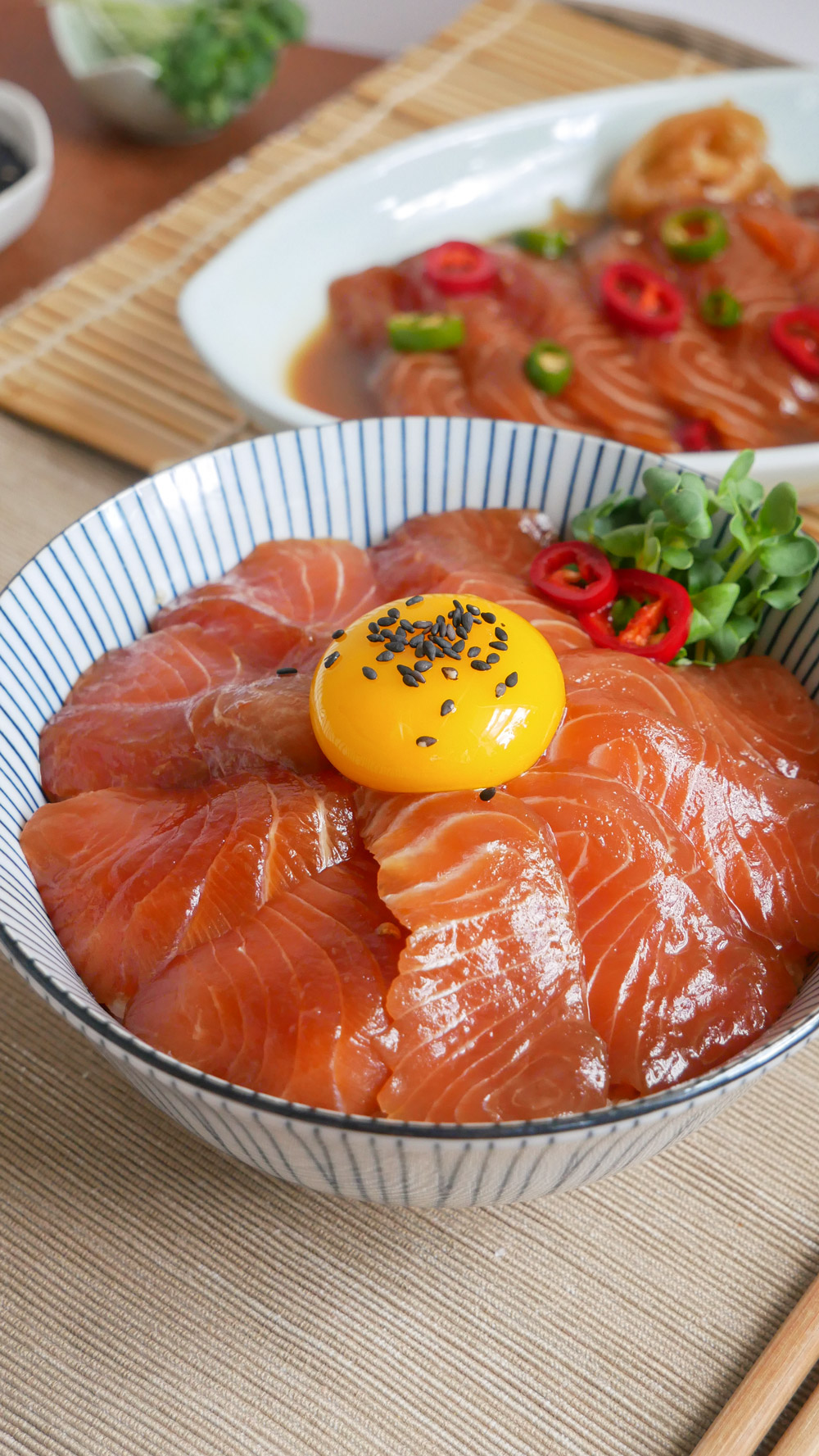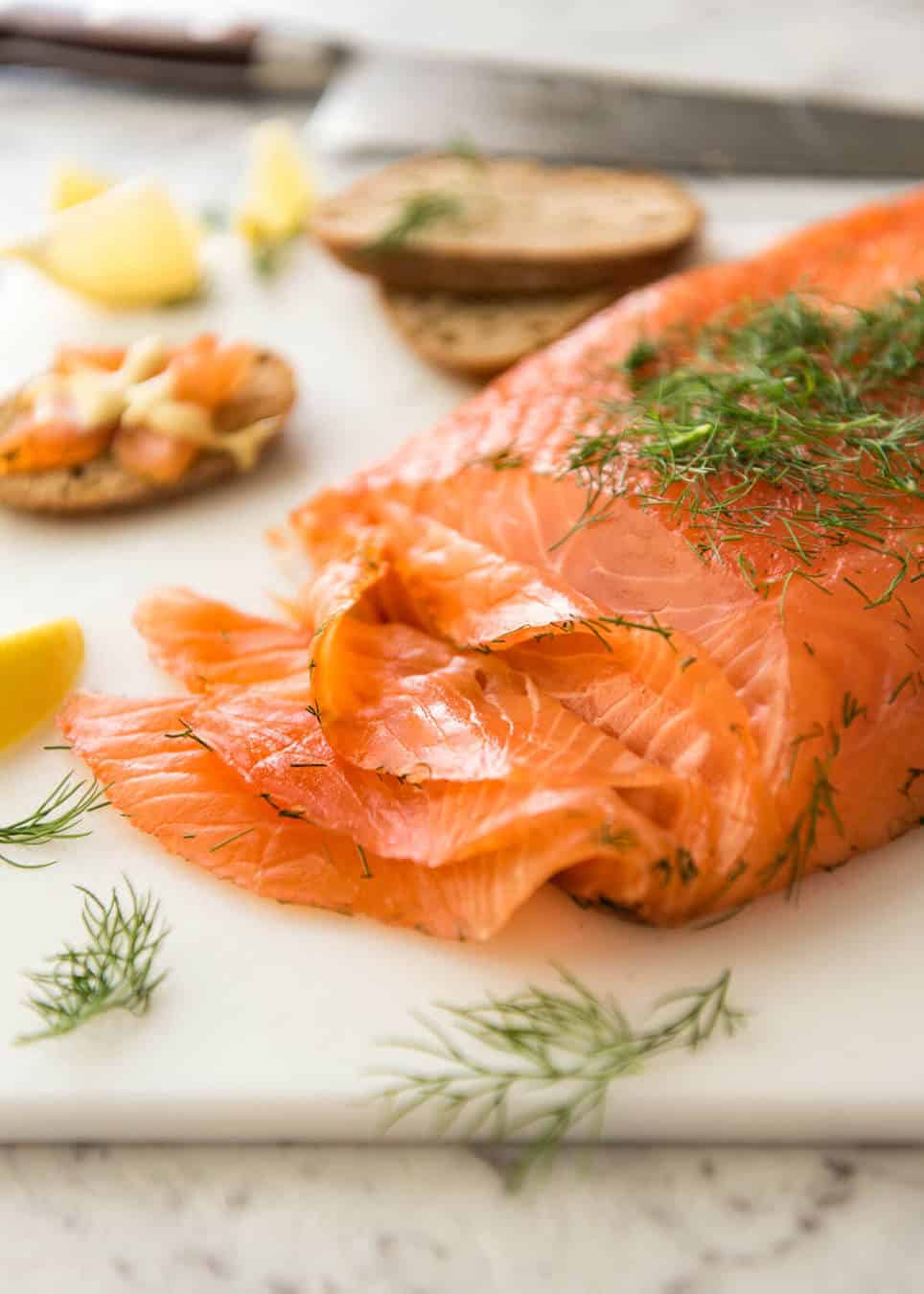Making sushi at home can be a fun and rewarding experience. But have you ever wondered how to cure salmon for sushi?
The secret lies in curing your salmon. Curing is a technique that uses salt and other ingredients to enhance the flavour and texture of the fish. With the right approach and high-quality ingredients, you can elevate your homemade sushi game to a whole new level.
This guide will walk you through the essential steps and techniques involved in curing salmon for sushi and sashimi. Whether you’re a seasoned sushi enthusiast looking to impress your guests or simply aiming to refine your culinary skills, this process is both rewarding and delicious. Get ready to unlock the secrets of sushi preparation and take your homemade creations to the next level!
Understanding Salmon for Sushi

Freshness is Key
Salmon is a popular choice for sushi, but for the best results, you need high-quality fish. Here’s what to know about selecting and preparing salmon for sushi.
Types of Salmon for Sushi
There are several types of salmon suitable for sushi, each offering unique flavors and textures:
- King Salmon: Known for its rich flavor and buttery texture, King Salmon is a premium choice for sushi.
- Coho Salmon: This type of salmon has a milder flavor and a leaner texture, making it a versatile option.
- Sockeye Salmon: Sockeye salmon boasts a vibrant red color and a rich, slightly sweet flavor.
Choosing the Freshest Salmon
Selecting the freshest salmon is crucial for delicious and safe sushi. Here are some tips:
- Look: Fresh salmon should have a bright, vibrant color. Avoid dull or faded fish.
- Touch: The flesh should be firm to the touch. Softness indicates older fish.
- Smell: Fresh salmon has a clean, slightly oceanic smell. Avoid strong, fishy odors.
- Source: Opt for wild-caught salmon from reputable sources. Farm-raised salmon might not have the same quality.
Preparing Salmon for Sushi: A Step-by-Step Guide

Making sushi at home is a rewarding experience, but it all starts with properly preparing the salmon. Here’s a breakdown of the steps involved:
1. Patting the Salmon Dry:
Before you begin, use paper towels to pat the salmon fillets dry. This ensures a cleaner cut and prevents your knife from slipping.
2. Filleting the Salmon:
Grab a sharp knife! Carefully remove any bones present in the salmon fillets. You can find many video tutorials online that demonstrate proper filleting techniques.
3. Removing the Skin:
Place the salmon fillet skin-side down on a cutting board. Using your sharp knife, gently slide it between the skin and the flesh at one end. Maintain slight pressure and continue gliding the knife along the fillet’s length until the skin is completely removed. Discard the skin and admire your beautiful, skinless salmon fillet, ready for sushi creation!
Tips:
- When filleting, focus on making smooth, even cuts.
- If you’re uncomfortable filleting the salmon yourself, ask your fishmonger to do it for you.
- Remember, using a sharp knife is crucial for clean cuts and safety.
By following these steps, you’ll have perfectly prepared salmon for your sushi-making adventure!
Curing Salmon For Sushi
Curing salmon is an essential step in transforming fresh fish into sushi-grade. This process enhances the flavor, texture, and, most importantly, the safety of the fish for raw consumption. There are two main curing techniques: salt curing and vinegar curing.
Why Cure Salmon for Sushi?
Curing salmon is crucial for several reasons. First, it intensifies the salmon’s natural sweetness and richness, creating a more complex flavor profile. Second, curing firms up the texture of the fish, resulting in a silky smooth consistency ideal for slicing in sushi. Finally, and most importantly, curing helps eliminate harmful bacteria, ensuring the safety of consuming raw salmon. Overall, curing is key to a delicious and safe sushi experience.
Different Curing Methods for Sushi Salmon
There are several ways to cure salmon for sushi, each offering unique results:
- Salt Curing: This classic method involves coating the salmon with salt, which draws out moisture and preserves the fish. After rinsing and drying, the salmon is ready for slicing.
- Sugar Curing: Adding sugar to the salt helps balance the salinity and adds a touch of sweetness for a more complex flavor and texture.
- Soy Sauce Curing: Marinating salmon in soy sauce infuses it with a rich umami flavor and creates a beautiful dark color.
- Dry Curing: A mixture of salt, sugar, and spices coats the salmon, which is then left to cure in the refrigerator. This method draws out moisture and intensifies the flavor over time.
No matter the chosen method, proper curing is vital for safe and delicious sushi-grade salmon.
Seasoning Up Your Sushi Salmon: A Guide to Flavor

Are you making sushi at home? Don’t neglect the salmon! Seasoning and flavoring are essential steps to elevate the taste of your fish. Here’s how to bring out the best in your sushi salmon.
After Curing:
Once your salmon is cured, it’s time to get creative! Here are some popular options to add depth and complexity:
- Sesame oil: Brush the salmon for a nutty, aromatic touch.
- Soy sauce: Drizzle for a savory, umami boost.
- Wasabi: A touch adds a refreshing, spicy kick.
- Ginger: Thinly sliced or pickled ginger provides a complementary tang.
Experiment and Balance:
Don’t be afraid to experiment with different combinations to find your perfect flavor profile. Remember, the key is balance. Use enough seasoning to enhance the salmon but not overpower its natural taste.
Popular Seasonings and Marinades:
Here are some classic seasonings and marinades to consider:
- Soy Sauce: Adds a rich, savory depth.
- Sesame Oil: Imparts a nutty aroma.
- Wasabi: Provides a spicy kick.
- Ginger: Offers a refreshing, tangy counterpoint.
Slicing and Serving Cured Salmon for Sushi

Creating the perfect sushi experience starts with flawlessly slicing and serving the cured salmon. To achieve this, a sharp, thin-bladed knife is essential. It allows for clean and precise cuts. Remember to cut against the grain of the fish for the smoothest texture.
Once sliced, arrange the salmon elegantly on a platter. Take care to preserve the delicate texture of the slices. For a visually stunning display, fan them out in a decorative pattern. This showcases the vibrant color and makes it easier for guests to pick up with chopsticks.
The Finishing Touches:
Complete the presentation with traditional accompaniments like soy sauce, wasabi, and pickled ginger. A sprinkle of sesame seeds or edible flowers adds a final touch of beauty. Enjoy the artful arrangement and savor the delicious flavor of the perfectly cured salmon.
Conclusion
Making perfect sushi at home starts with properly cured salmon. This process enhances the flavor and texture of the fish and kills bacteria, making it safe for consumption.
- Quality Matters: Understanding the different types of salmon and their freshness is key. Opt for the freshest fish possible, ensuring the best flavor and texture for your sushi.
- Salt or Vinegar: You can choose between salt curing and vinegar curing. Both methods effectively kill bacteria while enhancing the taste of the salmon.
- Seasoning and Flavoring: Elevate your sushi experience by exploring various seasonings and flavorings for your cured salmon.
- Slicing and Arranging: Slice the cured salmon thinly and arrange it attractively for beautiful and delicious sushi.
By following these steps, you can create restaurant-quality sushi at home with perfectly cured salmon!
References:
FAQ About Curing Salmon For Sushi: Preparing Sashimi-grade Fish
Q: What is the importance of curing salmon for sushi?
A: Curing salmon for sushi helps to enhance its flavor, texture, and overall quality, making it safe to consume raw.
Q: How long should salmon be cured for sushi?
A: The duration of curing salmon for sushi can vary, but it is recommended that it be cured for at least 24 hours to ensure proper texture and flavor development.
Q: What ingredients are commonly used to cure salmon for sushi?
A: Common ingredients used for curing salmon for sushi include salt, sugar, herbs, spices, and sometimes other flavorings like soy sauce or citrus zest.
Q: Can any salmon be used for sushi?
A: For sushi, it is recommended to use high-quality, fresh salmon labeled as sashimi-grade. This salmon is safe to consume raw after proper curing and handling.
Q: How should cured salmon be stored before using it for sushi?
A: Cured salmon should be tightly wrapped in plastic wrap or vacuum-sealed and stored in the refrigerator at a consistent temperature to maintain freshness and flavor.
Q: Are there alternative methods to cure salmon for sushi if time is limited?
A: If time is limited, quick-curing methods using a higher concentration of salt and sugar and applying gentle pressure can help expedite the curing process without compromising flavor.

Welcome to Braddock Bay Tavern & Grill, where history, delicious cuisine, and stunning views come together to create an unforgettable experience. Our restaurant, situated on the picturesque edge of Lake Ontario, has a rich history that adds a unique charm to your dining experience. The roots of our establishment can be traced back to 1865, when it was first constructed as an icehouse. Over the years, it transformed into the historic Braddock Bay Hotel, becoming a beloved local landmark. Today, we take pride in preserving the building’s historical beauty, ensuring that every visit to our restaurant is a journey through time.